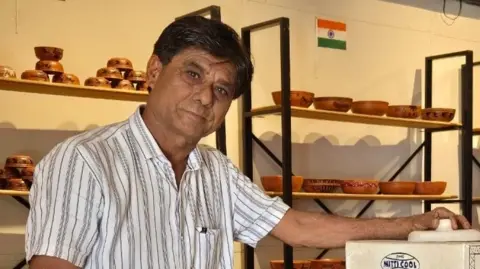The Rise of Frugal Tech Innovations in India

In recent years, frugal tech innovations in India have emerged as a powerful force, creating affordable, practical solutions that address everyday challenges faced by millions. These grassroots inventions not only demonstrate remarkable creativity but also foster economic growth and social empowerment in rural and urban communities alike. This article explores inspiring stories of individuals and start-ups pioneering frugal technology to make a real difference.
Mansukh Prajapati: Revolutionizing Cooling with Clay Technology
Mansukh Prajapati’s journey exemplifies the spirit of frugal innovation. Growing up in Morbi, a western Indian city, his childhood revolved around pottery—a humble family trade. He often walked six miles at dawn with his mother to collect clay, a raw material essential for their work. Despite the significance of clay pots in Indian households during the 1970s, the family’s income remained low, and the profession carried social stigma.
The turning point came after a devastating earthquake in Gujarat in 2001 destroyed his home and workshop. Among the ruins lay shattered clay pots, which inspired Prajapati to rethink their purpose. He envisioned a clay-based refrigerator that required no electricity, ideal for regions with limited access to power.

After years of experimentation, and despite financial hardships that forced him to sell his house, Prajapati developed the MittiCool—a clay fridge that uses natural evaporative cooling to keep fruits and vegetables fresh for days. Priced affordably at $95, MittiCool is now available in over 300 stores across India and exported internationally to countries such as the UK and Kenya.
His success not only preserves an ancient craft but also supports 150 employees and expands into cookware and clay water filters, showcasing how frugal tech innovations in India can scale sustainably.
Lotus Fibre Innovation: Bijayshanti Tongbram’s Sustainable Fashion
Another inspiring example comes from Bijayshanti Tongbram, a botanist and entrepreneur from Manipur in northeast India. She found a novel use for lotus stems, typically discarded after religious ceremonies in her village by the serene Loktak Lake. By extracting silk-like fibres from these stems, she created a unique yarn that is handwoven into scarves and garments.

This sustainable venture not only preserves natural resources but also empowers local women, providing them an alternative livelihood beyond fishing. Bijayshanti’s team of 30 women earn steady incomes, helping uplift their community. Despite facing funding challenges common in rural entrepreneurship, her work epitomizes how frugal tech innovations in India combine environmental consciousness with economic opportunity.
Supporting Grassroots Innovators: The Role of the Honeybee Network
Professor Anil Gupta, founder of the Honeybee Network, underscores the importance of supporting grassroots innovations. He defines frugal innovation as creating accessible, affordable, and practical solutions driven by necessity rather than formal education.
These start-ups often operate in rural areas and generate local employment, initiating economic cycles of growth and resilience. However, lack of awareness about government schemes, limited access to funding, and minimal venture capital interest in rural tech hinder their expansion. Despite these obstacles, innovators persist, fueled by determination and community impact.
Smart Farming for the Visually Impaired: Girish Badragond’s Assistive Device
In Karnataka’s Vijaynagar, inventor Girish Badragond develops a “smart farming stick” to empower blind and partially sighted farmers. This innovative device integrates soil sensors and weather data to provide real-time crop advice through audio and vibrations, allowing users to farm independently.
Girish’s invention exemplifies how frugal tech innovations in India address inclusivity and social barriers, unlocking opportunities for marginalized groups. While still in prototype stage, it highlights the potential for technology to transform traditional livelihoods.
Challenges and Opportunities for Frugal Tech Start-ups in India
Although the impact of frugal tech innovations is undeniable, challenges remain. Limited access to financing, infrastructure, and marketing impede many ventures from scaling. Furthermore, formal education and technical training gaps often slow product development and adoption.

Nevertheless, increasing recognition by government agencies and NGOs, along with growing consumer interest in sustainable and affordable products, offers hope. Collaborative ecosystems that link innovators to resources and markets will be key to sustaining this momentum.
The Future of Frugal Tech Innovations in India
Frugal technology is redefining innovation by focusing on cost-effective, practical solutions that serve the masses. The inspiring journeys of Mansukh Prajapati, Bijayshanti Tongbram, and Girish Badragond illustrate how necessity breeds creativity and social change. With enhanced support and investment, these innovations can continue transforming lives, fostering inclusive growth, and showcasing India’s potential as a hub for frugal tech innovation.




